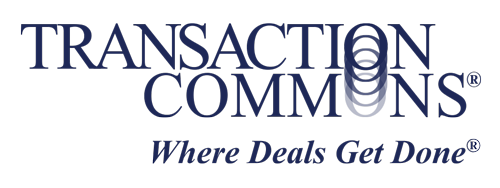Transaction Process Governance – Part 2

In Transaction Process Governance – Part 1 we shared some thoughts on how to manage the due diligence process in a business transaction. Part 2 will focus on implementing a control structure for transaction document negotiation.
Key transaction document negotiation process steps to be defined include:
- Who reviews the transaction document drafts? Where and how do they review them?
- How are document comments collected and acted upon?
- Who will propose document drafts and circulate revisions to them, both for internal review and for presentation to the other parties?
- Who monitors and manages 1, 2 and 3?
- When is the target date for transaction document signing and transaction closing and what are the measurable milestones along the way?
As the due diligence effort progresses and the acquirer is comfortable with what it sees, the time comes to move forward with negotiating transaction documents. The process might start with a detailed letter of intent or term sheet and will soon involve the sharing of purchase agreement and other document drafts among the transaction parties.
The complexity of the process will expand as more complicated documents are prepared and exchanged, many of which will touch upon specialty areas such as intellectual property, environmental matters, regulatory compliance, litigation, tax and employee benefits. Some of the transaction team members will be involved in negotiating virtually all of the documents, while other transaction team members will have input on only a few. But it is important that all team members, even those with limited day-to-day involvement, be kept in the loop even if only to monitor the progress of the overall transaction or to review changes in the documents touching their area of expertise. In all cases, it is important to define the document review and drafting team as early as possible, anticipating the issues likely to arise and the need for specialized expertise.
Transaction participants are probably accustomed to exchanging drafts by email, although the potential for inefficiency and error can be high without very careful version management and careful inclusion of all appropriate transaction team members. Solutions like Transaction Commons provide a platform for organizing and sharing draft transaction documents across a defined transaction team. Whether using email or a solution like Transaction Commons, it is important to identify the participants whose role will be reviewing the documents and discussing their comments with their internal team versus those participants who will be preparing revisions to document drafts and sharing those revisions with the other transaction parties. Multiple individuals emailing document drafts – especially where the sorting of emails is used to identify prior versions – can lead to confusion.
Even the most organized process can be challenging when a new participant becomes involved mid-transaction, either because of personnel changes at one of the parties (or their advisors or lenders) or because new issues come to light that require adding team members with different areas of expertise. These new participants will need to fully understand the current state of the transaction, and in many cases may also need to have access to previously exchanged information, like due diligence information and document drafts, to understand how the transaction negotiation reached its current state.
It is important for transaction leaders on both sides of the transaction to keep track of the current version of all documents being negotiated. In some cases weeks will pass between the time work on a transaction document is completed and the time for it to be signed. Or between the time a document draft is circulated and the time when other transaction parties focus on providing comments to that draft document. Searching for these earlier document drafts in an email inbox may be time-consuming and may not accurately locate the most current version.
And even documents thought to be final are often revised further – based on new facts, changed treatment of issues, or late input of reviewers. Saving a document with “final” in the document name is almost a jinx – guaranteeing that it will not be the final version of the document. But the email that circulated the outdated draft will look “final” – again increasing the risk of error in utilizing email to exchange document versions. This is where the benefit of a highly-organized transaction process management solution like Transaction Commons becomes the most apparent.
In complex transactions, the transaction document negotiation process will typically be managed by lead legal counsel for each party. For transactions with less legal counsel involvement, transaction process management might fall on a person on the business team. As we discussed in Part 1, it is often useful for each active party in the transaction to a designate an experienced person (with excellent organizational skills and attention to detail) to be the clearinghouse and administrative manager for transaction activity. Even when legal counsel is actively involved, legal resources are effectively complemented with dedicated transaction process administrative support.
In this age of electronic document signing tools, as well as the ability to sign and scan documents, all parties need to decide upon the process for final transaction document execution. While there is much to be said for the convenience of electronic document signing, for any important transaction the clarity and certainty of physically signed complete documents, that are then shared among the parties, must be considered. And, of course, the importance of identifying and signing only the final version of each of the transaction documents cannot be overstated.
